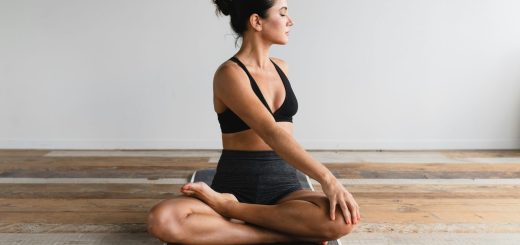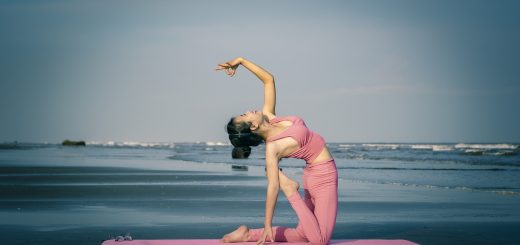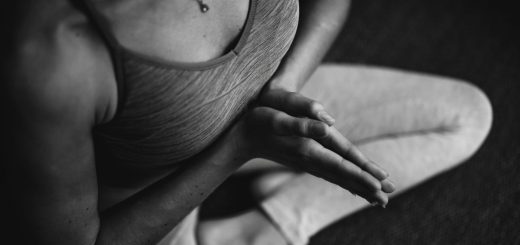Props Guide: Tools for Iyengar Yoga Practice

Before diving in, please note: This post is for informational purposes only. If you’d like to know more about how we approach topics, feel free to check out our friendly Disclaimer Page.
Hey there, amazing readers! 🖐️ Just a quick note: yes, we know there are a lot of ads here. Trust us, we get it—it’s not the prettiest look, but they help us keep this blog alive and kicking. Those pesky little ads cover the costs of all the behind-the-scenes magic, from hosting and tech stuff to creating content we hope you’ll love.
We’re committed to delivering quality posts, and your support (even just sticking around despite the ads) means everything to us. So, bear with us, and thanks for helping us keep the good vibes rolling. Now, on to the fun stuff! 😉
TRANSLATE BUTTON AT THE END OF THE ARTICLE
A Quick Overview
In Iyengar Yoga, props are essential tools used to support and enhance the practice of yoga poses.
These props help students of all levels improve their alignment, deepen their stretches, and access poses that may be difficult due to physical limitations.
Iyengar Yoga, named after its founder B.K.S.
Iyengar, is known for its precise alignment and attention to detail, and props play a significant role in achieving this level of precision and safety in practice.
From blocks and straps to bolsters and chairs, there is a wide range of props available to support practitioners in their journey towards physical, mental, and emotional well-being.
What are Props in Iyengar Yoga?
Props in Iyengar Yoga are tools that help students achieve proper alignment, stability, and comfort in yoga poses.
These props assist practitioners in accessing poses that may be challenging due to tightness, injury, or other physical limitations.
Some common props used in Iyengar Yoga include blocks, straps, bolsters, blankets, chairs, and ropes.
Each prop serves a specific purpose in supporting the body and enhancing the practice of yoga asanas.
Importance of Props in Iyengar Yoga
Props are essential in Iyengar Yoga as they help students of all levels experience the benefits of each pose more deeply and safely.
By providing support and stability, props allow practitioners to explore their range of motion, improve alignment, and prevent injury.
Props also help beginners build strength and flexibility gradually, while advanced practitioners can use props to refine their practice and access more advanced poses.
Overall, props play a crucial role in making yoga accessible and inclusive for people of all ages, abilities, and body types.
How Props Enhance Yoga Poses
Props enhance yoga poses by providing support, stability, and alignment.
For example, using a block under the hand in Trikonasana (Triangle Pose) can help maintain proper alignment in the spine and pelvis.
A strap can assist in reaching the feet in Paschimottanasana (Seated Forward Bend) for students with tight hamstrings.
Bolsters and blankets offer comfort and relaxation in restorative poses like Supta Baddha Konasana (Reclining Bound Angle Pose).
By using props mindfully, practitioners can deepen their practice, increase flexibility, and experience poses in a new light.
Different Types of Yoga Props
There are various types of props used in Iyengar Yoga, each serving a specific purpose in supporting the body and enhancing the practice of yoga poses.
Some common types of yoga props include:
1.
Blocks: Used to bring the floor closer to the student, providing support and stability in standing, seated, and balancing poses.
2.
Straps: Help students reach their feet, bind their hands, or deepen stretches in poses where flexibility is limited.
3.
Bolsters: Offer support and comfort in restorative poses, backbends, and forward bends.
4.
Blankets: Provide cushioning and warmth in seated poses, relaxation poses, and shoulder stands.
5.
Chairs: Assist in standing poses, inversions, and seated poses by offering support and stability.
6.
Ropes: Used for traction, support, and alignment in poses like Sirsasana (Headstand) and Sarvangasana (Shoulderstand).
Essential Props for Iyengar Yoga Practice
When starting an Iyengar Yoga practice, some essential props to have on hand include:
1. 2-4 Yoga Blocks: To support the hands, feet, or seat in various poses.
2.
Yoga Strap: For stretching and alignment assistance in seated and standing poses.
3.
Bolster: To provide support and comfort in restorative poses and backbends.
4.
Yoga Blanket: For cushioning and warmth in seated poses and relaxation.
5.
Yoga Chair: To aid in standing poses, inversions, and seated poses.
Having these essential props available can enhance your practice and make poses more accessible and enjoyable.
How to Use Props Safely and Effectively
To use props safely and effectively in Iyengar Yoga practice, it is essential to follow these guidelines:
Listen to your body: Pay attention to how your body feels in each pose and adjust the props accordingly.
Seek guidance: If you are unsure how to use a specific prop, ask your teacher for guidance.
Gradual progression: Start with the basic use of props and gradually advance to more complex variations.
Alignment focus: Use props to maintain proper alignment and stability in poses.
Breath awareness: Stay connected to your breath while using props to deepen your practice.
By following these tips, you can ensure a safe and effective practice with the help of props.
Benefits of Using Props in Yoga Practice
The benefits of using props in yoga practice are numerous, including:
Improved alignment: Props help maintain proper alignment in poses, reducing the risk of injury.
Increased flexibility: Props assist in deepening stretches and accessing poses that may be challenging.
Enhanced relaxation: Props offer support and comfort, allowing for deeper relaxation in restorative poses.
Accessible practice: Props make yoga poses more accessible for students of all levels and abilities.
Mind-body connection: Props can help practitioners deepen their awareness of their body and breath during practice.
Overall, using props in yoga practice can enhance the physical, mental, and emotional benefits of the practice.
Common Misconceptions About Props
Some common misconceptions about props in yoga practice include:
Props are only for beginners: Props are beneficial for practitioners of all levels to deepen their practice and refine their alignment.
Using props is a sign of weakness: Props are tools to support and enhance your practice, not a reflection of weakness.
Props are unnecessary: Props can help prevent injury, improve alignment, and make poses more accessible and enjoyable.
Props are only for those with physical limitations: While props can assist students with limitations, they can also benefit those looking to refine their practice and deepen their poses.
By understanding these misconceptions, practitioners can embrace the use of props as valuable tools in their yoga practice.
Tips for Choosing the Right Props
When choosing props for your Iyengar Yoga practice, consider the following tips:
Quality: Invest in high-quality props that are durable and supportive.
Size: Select props that are the right size for your body and practice.
Versatility: Choose props that can be used in a variety of poses and practices.
Comfort: Opt for props that offer comfort and support without causing discomfort.
Budget-friendly: Look for props that fit your budget while still meeting your needs.
By keeping these tips in mind, you can choose the right props to enhance your yoga practice effectively.
DIY Props: Making Your Own at Home
For those looking to create their own yoga props at home, here are some DIY ideas:
Yoga Blocks: Use sturdy books or foam blocks for a cost-effective alternative.
Yoga Straps: Use a belt, scarf, or fabric strip as a substitute for a yoga strap.
Bolsters: Roll up blankets or towels to create a makeshift bolster for support.
Yoga Blankets: Use thick blankets or towels for cushioning and warmth in seated poses.
Yoga Chair: Utilize a stable chair or bench for support in standing poses and inversions.
Making your own props at home can be a creative and budget-friendly way to enhance your practice.
Props Maintenance and Care Tips
To ensure the longevity and effectiveness of your yoga props, follow these maintenance and care tips:
Clean regularly: Wipe down props with a damp cloth or gentle cleanser to keep them clean and hygienic.
Air out: Allow props to air out and dry thoroughly to prevent mold and mildew growth.
Store properly: Store props in a clean, dry area away from moisture and sunlight.
Inspect for damage: Regularly check props for signs of wear and tear, and replace when necessary.
Follow manufacturer’s instructions: Read and follow any care instructions provided by the manufacturer to maintain the quality of your props.
By taking care of your props properly, you can ensure they remain in good condition and support your practice effectively.
Conclusion
Props play a vital role in Iyengar Yoga practice, offering support, alignment, and accessibility to practitioners of all levels.
By understanding the importance of props, using them safely and effectively, and choosing the right props for your practice, you can enhance your yoga experience and deepen your practice.
Whether you are a beginner or an advanced practitioner, incorporating props into your practice can help you explore new possibilities, improve your alignment, and connect more deeply with your body and breath.
Embrace props as valuable tools on your yoga journey and enjoy the benefits they bring to your practice.

The Enlightenment Journey is a remarkable collection of writings authored by a distinguished group of experts in the fields of spirituality, new age, and esoteric knowledge.
This anthology features a diverse assembly of well-experienced authors who bring their profound insights and credible perspectives to the forefront.
Each contributor possesses a wealth of knowledge and wisdom, making them authorities in their respective domains.
Together, they offer readers a transformative journey into the realms of spiritual growth, self-discovery, and esoteric enlightenment.
The Enlightenment Journey is a testament to the collective expertise of these luminaries, providing readers with a rich tapestry of ideas and information to illuminate their spiritual path.
Our Diverse Expertise 🌟
While our primary focus is on spirituality and esotericism, we are equally passionate about exploring a wide range of other topics and niches 🌍📚. Our experienced team is dedicated to delivering high-quality, informative content across various subjects ✨.
To ensure we provide the most accurate and valuable insights, we collaborate with trusted experts in their respective domains 🧑🏫👩🏫. This allows us to offer well-rounded perspectives and knowledge to our readers.
Our blog originally focused on spirituality and metaphysics, but we’ve since expanded to cover a wide range of niches. Don’t worry—we continue to publish a lot of articles on spirituality! Frequently visit our blog to explore our diverse content and stay tuned for more insightful reads.






